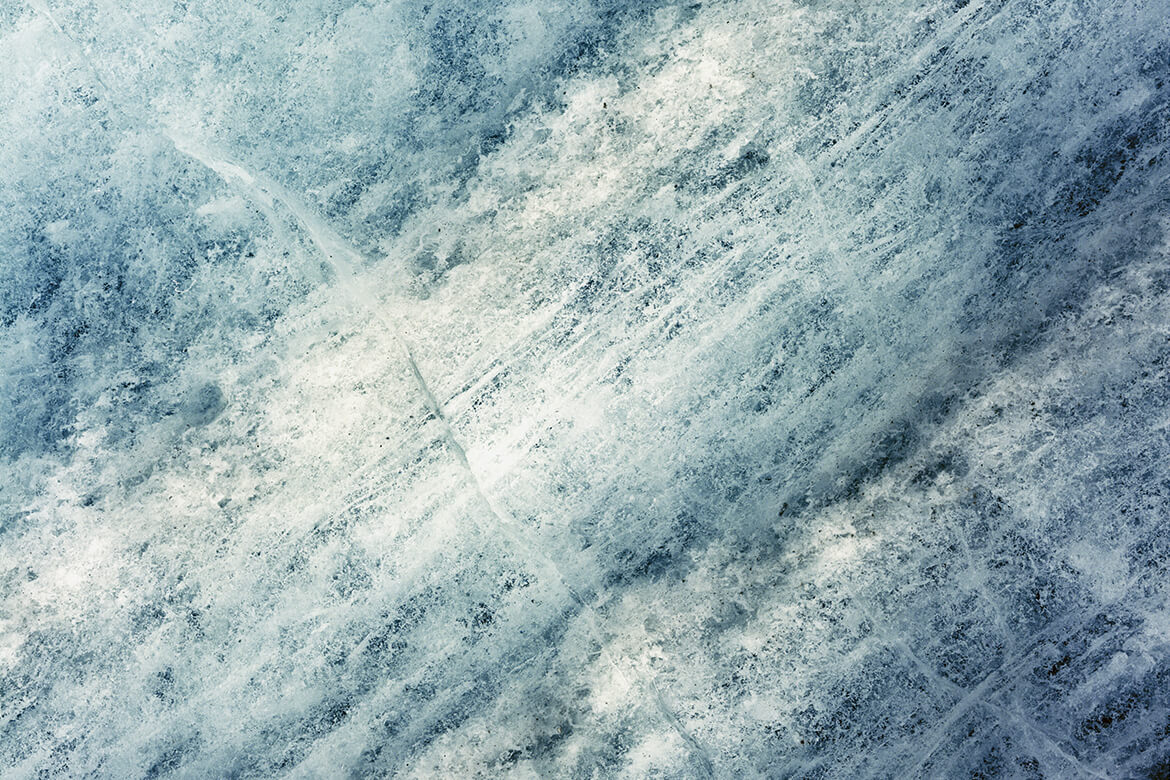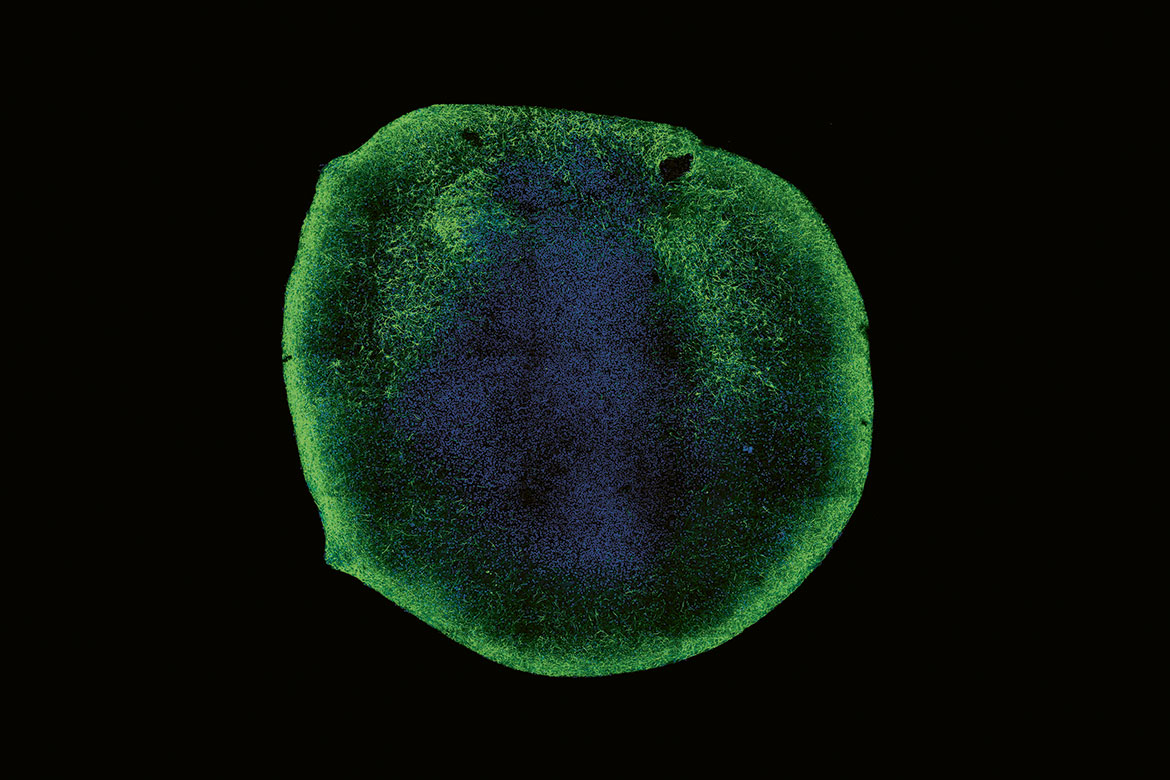IN THE PICTURE
Slice of sea ice?
The Arctic ice pack is cracking and gradually crumbling. Scientists are now trying to improve our understanding of the properties of its snowy top blanket, which plays a crucial role in the pack’s survival.

An extraordinary fracture in the Arctic ice pack. | Image: Matthias Jaggi
It looks like a slice of cake ready to be served, but it’s not. This photograph shows us a crack in the Arctic ice pack. The ice appears in black, covered by a layer of snow. In the darkest part, we can make out the sea water, which has already refrozen on the surface. The picture also shows some almost poetic details: shapes drawn by the wind in the snow and feather-like crystals created by the difference in temperature between the liquid water at -1.8 degrees Celsius and the much colder ambient air.
“I liked these details and the contrast of the original colours, which I wanted to bring out even more with a black-and-white picture”, says its ‘author’ Matthias Jaggi, a snow physicist at the Swiss Federal Institute for Snow and Avalanche Research in Davos. “But I was especially attracted by the geometry of this fracture: it’s uncommon to find right-angled shapes in nature”. Because the ice pack covering the Arctic Ocean is regularly in motion, it is not unusual for it to break. However, a right-angle break is relatively rare. “The shape of the cracks depends both on the forces exerted by the movement of the ice and on its properties, as it breaks at the point where its mechanical robustness is weakest”, says Jaggi.
This picture was taken during the second circuit of the Mosaic expedition. Jaggi took part on this journey with the aim of gaining a better understanding of the properties of the snow layer that covers the ice pack. “The layer acts as an insulator and is therefore decisive for the growth and melting of the ice”, he says. In this picture, the snow layer is about ten centimetres thick, which can be described as relatively thin. Surprisingly, it is not precipitation – which is very low – that determines the depth of the snow cover in the Arctic, but mainly the wind, which drives the fallen snow.




